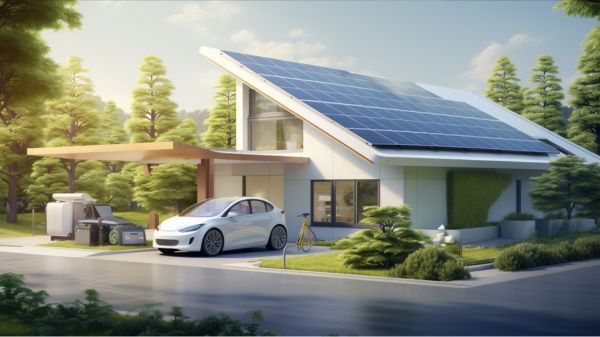Unlocking Climate Solutions With Green Energy
Welcome to a world where you wield the power to unlock climate solutions with green energy. Embrace the electrifying possibilities of renewable sources and witness the transformative impact they have on our environment.
Through government initiatives and innovative technologies, we can pave the way to a sustainable future. Join the movement, and together, let’s harness the force of green energy to combat climate change and ensure our planet’s well-being for generations to come.
Benefits of Green Energy for Climate Change
You can unlock numerous benefits for climate change by embracing green energy.
Green energy, also known as renewable energy, offers significant economic advantages and job creation opportunities.
Investing in renewable energy sources such as solar, wind, hydro, and geothermal power can stimulate economic growth and reduce greenhouse gas emissions simultaneously.
According to the International Renewable Energy Agency (IREA), the renewable energy sector employed approximately 11 million people worldwide in 2018, and this number is expected to rise as the demand for clean energy increases.
Additionally, transitioning to green energy can lead to cost savings in the long run, as renewable energy technologies become more affordable and efficient.
Renewable Energy Sources for a Sustainable Future
To ensure a sustainable future, continue exploring renewable energy sources that can further unlock climate solutions. As emerging technologies continue to advance, the potential for renewable energy is expanding rapidly. These technologies aren’t only more environmentally friendly, but also offer numerous benefits for individuals and communities.
Here are three key reasons why renewable energy sources are crucial for a sustainable future:
- Reducing greenhouse gas emissions: Renewable energy sources such as solar and wind power generate electricity without emitting harmful greenhouse gases, helping to mitigate climate change and air pollution.
- Enhancing energy security: Unlike fossil fuels, which are finite resources, renewable energy sources are abundant and can be harnessed locally, reducing dependence on imported energy and enhancing energy security.
- Driving economic growth: The transition to renewable energy creates job opportunities in the clean energy sector, stimulates local economies, and attracts investment.
To fully realize the potential of renewable energy, governments can play a vital role by implementing supportive renewable energy policies that encourage investment, research, and development.
Green Energy Technologies and Their Impact on the Environment
Green energy technologies have a significant impact on the environment. As the world strives for sustainable solutions, the economic impact of green energy can’t be ignored. Implementing green energy technologies, however, comes with its own set of challenges.
One of the main challenges in implementing green energy technologies is the initial cost. While green energy sources like solar and wind power have become more affordable in recent years, the upfront investment is still higher compared to traditional energy sources. This can deter some individuals and businesses from transitioning to green energy.
Another challenge is the intermittency of certain green energy sources. Solar and wind power, for example, rely on weather conditions, making their production inconsistent. This can pose challenges in meeting the energy demands of a growing population.
Despite these challenges, the economic impact of green energy is undeniable. The renewable energy sector has created numerous job opportunities and contributed to economic growth. Investment in green energy technologies can stimulate local economies, reduce dependence on fossil fuels, and mitigate the harmful effects of climate change.
Government Initiatives Promoting Green Energy Solutions
Government initiatives play a crucial role in promoting the adoption of green energy solutions. By implementing incentives for renewable energy and enacting green energy policies, governments can create a favorable environment for the growth and development of clean energy technologies. These initiatives serve as catalysts for change, encouraging individuals and businesses to invest in renewable energy sources and reduce their carbon footprint.
Some examples of government initiatives promoting green energy solutions include:
- Feed-in tariffs: This policy guarantees a fixed payment rate for electricity generated from renewable sources, providing a financial incentive for individuals and businesses to install renewable energy systems.
- Tax credits: Governments offer tax credits to individuals and companies that invest in renewable energy technologies, reducing the upfront costs and making clean energy more affordable.
- Renewable portfolio standards: These policies require utilities to obtain a certain percentage of their electricity from renewable sources, driving the demand for green energy and increasing its market share.
Green Energy Innovations Driving Climate Change Solutions
With innovative green energy solutions, you can drive real change in the fight against climate change. Green energy startups are at the forefront of this movement, developing groundbreaking technologies that revolutionize the way we produce and consume energy. These startups are focused on finding sustainable alternatives to fossil fuels and reducing carbon emissions. By harnessing the power of renewable sources such as solar, wind, and hydro, these companies are paving the way for a cleaner and greener future.
Additionally, corporate sustainability has become a key driver in the adoption of green energy innovations. Companies are increasingly recognizing the importance of integrating sustainable practices into their operations, not only for environmental reasons but also for economic benefits. By investing in green energy and implementing sustainable initiatives, businesses can reduce their carbon footprint, save on energy costs, and enhance their brand image.
Together, these green energy innovations and corporate sustainability efforts are driving climate change solutions and creating a sense of belonging in a collective fight against a global challenge.
Conclusion
You may be skeptical about the feasibility of transitioning to green energy solutions on a large scale.
However, the data-driven evidence overwhelmingly supports the benefits of green energy for mitigating climate change.
With renewable energy sources becoming increasingly affordable and efficient, coupled with government initiatives and innovative technologies, we’ve the tools to unlock climate solutions.
By embracing green energy, we can create a sustainable future and ensure a cleaner and healthier planet for generations to come.






